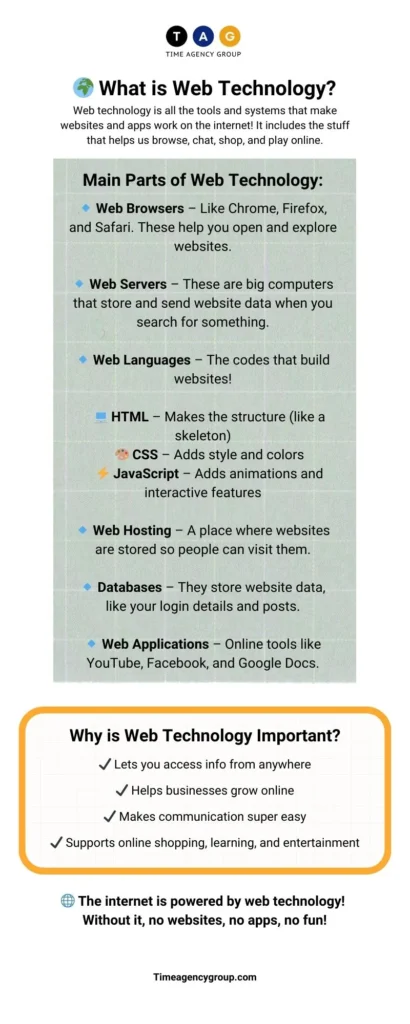Web technology refers to the tools, techniques, and systems that enable communication, interaction, and functionality on the World Wide Web. From the foundational protocols that govern the internet to advanced frameworks that power modern web applications, web technology forms the backbone of our digital experience. It bridges the gap between users and servers, making it possible for businesses, organizations, and individuals to connect, share information, and perform a wide range of tasks online. In this blog, you will get to know everything about web technology and more.
What do you mean by web technologies?
Web technologies, it is a phrase you’ve come across earlier. Ever wondered its true meaning? Computers differ from us; they lack our style of communication. Thus, they rely on precise codes. Web technologies are those very codes. For instance, markup languages like HTML, XML, and XHTML or multimedia packets help computers interact.
The Importance of Web Technology
Web tech shapes our reality, touching every part of life. The upsides are countless. Here’s how: Its magic weaves us as a global community. It makes far-reaching teams doable. The internet-powered facility lets us access data, communicate, and conduct transactions. An arena for ideas to breathe and projects to cross borders gets created by this.
It boosts commerce and fosters entrepreneurship. Digital tools aid businesses in expanding their reach, appealing to new patrons, and streamlining operations. Impact points include e-business, e-marketing, cloud computing, and teamwork systems. Education access gets an upgrade with this. Internet-based learning opens up new avenues.
A lifelong learning pass is gifted to learners throughout the globe. Social change, too, is driven by this. It allows individuals to get proactive. Be it backing organizations, sharing thoughts, or spreading awareness. The outcome? A tuned-in, positively impacted society. To wrap it up, tech is essential for the Internet. The unseen communication has a massive impact on our relations, work, learning, and world-change efforts. In essence, it’s a cornerstone of our everyday exchanges with reality and the surrounding world.
5 Classification of Web Technology
Web technologies are like different tools, each playing a part in building our modern world. Some of them are mentioned below:
Front-end Web Technologies
Imagine a theater stage. This is where the audience (users) see and interact with the spectacle (websites or apps). HTML (Hypertext Markup Language), CSS (Cascading Style Sheets), and JavaScript are the behind-the-scenes crew who make the magic happen. They control how the ‘stage’ looks and works.
Back-end Web Systems
The unseen part of the web, located on the web server, is known as the back end or server side. This segment uses different coding languages such as PHP, Python, Java, and Node.js. The job here? Handle and tweak the site’s content and services, hidden from the user’s view.
Database Systems
Now, a crucial part of these components is databases. They use tech stuff like SQL and NoSQL. Their role? To store and manage the heaps of data needed for applications and platforms.
Internet Rules and Criteria
We follow techniques set by certain internet standards like Hypertext Transfer Protocol (HTTP) and Hypertext Transfer Protocol Secure (HTTPS). These standards make sure data sent from users to servers happens correctly. Plus, they create guidelines on digital technology use.
Online Tools and Resources
Tech tools such as Symbol, Bootstrap, Foundation, jQuery, Backbone, Node.js, PHP.js, and Laravel are often utilized. These ready-to-use tools offer a range of solutions to meet various needs. They also speed up build times. No need to write new scripts or repeat similar coding tasks.
Conclusion
Web development recruitment agencies play a crucial role in connecting skilled professionals with businesses that rely on cutting-edge web technology. These technologies shape how we interact with the digital world, encompassing tools, frameworks, and protocols that drive the creation, deployment, and management of web-based applications and services. From simple websites to complex web applications, they fuel innovation, connectivity, and convenience in our daily lives. Understanding the classifications of web technologies—from front-end and back-end development to emerging trends like Web 3.0—helps highlight their diverse applications and impact. As the web continues to evolve, staying informed about these advancements is essential for businesses, developers, and recruitment agencies looking to thrive in the digital landscape.
FAQs
Can you define a web browser?
A web browser is like your ticket to explore the internet. It fetches details from various places on the internet and shows them on your computer or phone. This transfer of data, whether it’s text, pictures, or videos, happens via the Hypertext Transfer Protocol—a set rule for how web data moves around.
Can you guess the key job of a web browser?
It’s software letting folks see and access material on the web. Searching out articles, pictures, videos, documents, and more from servers worldwide, then showing them on your gadget!
Infographic







